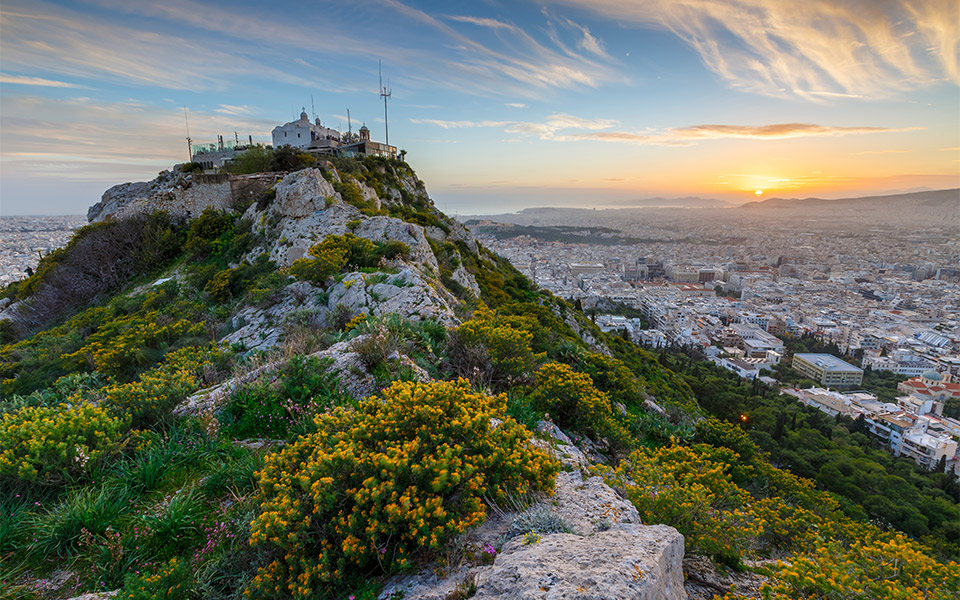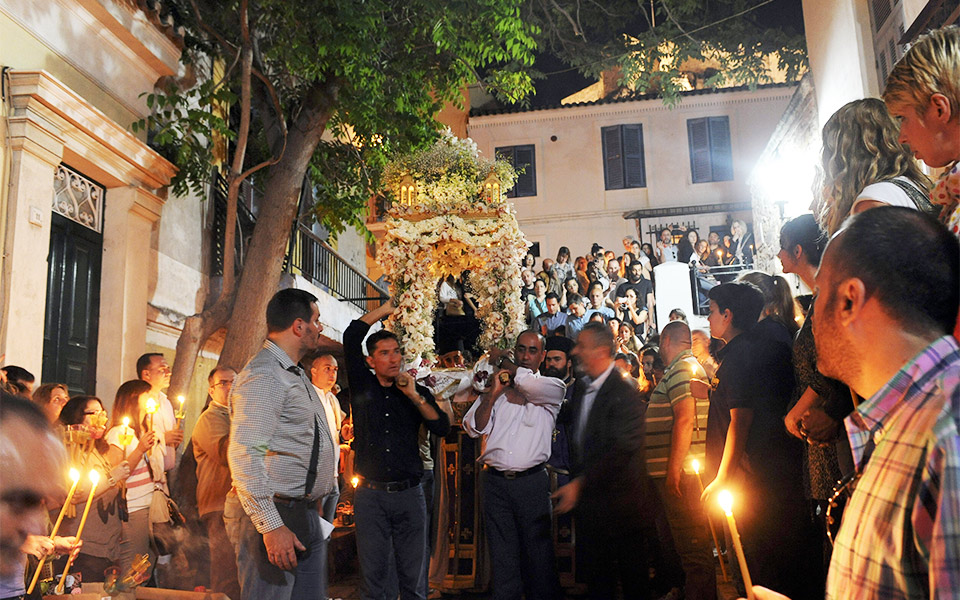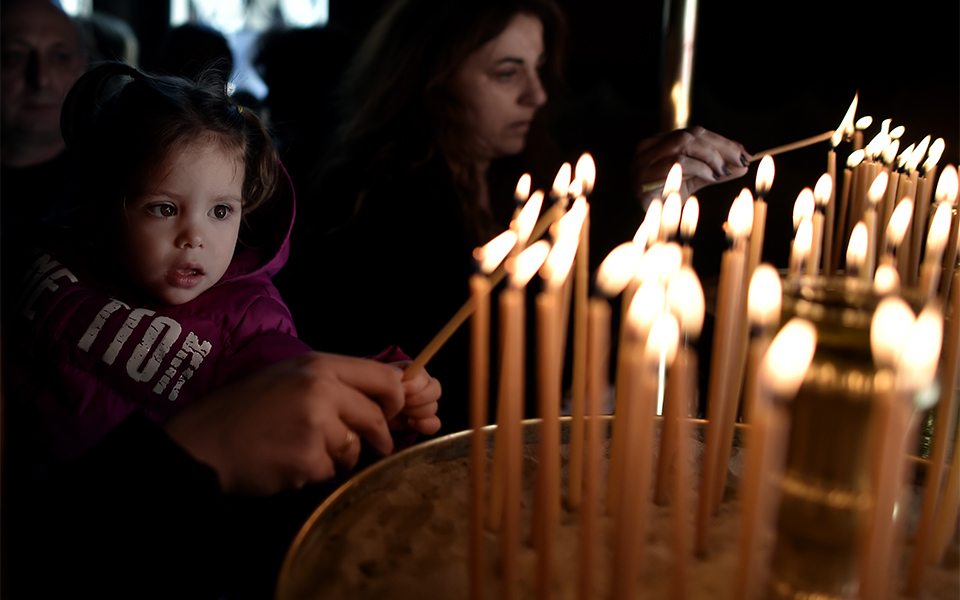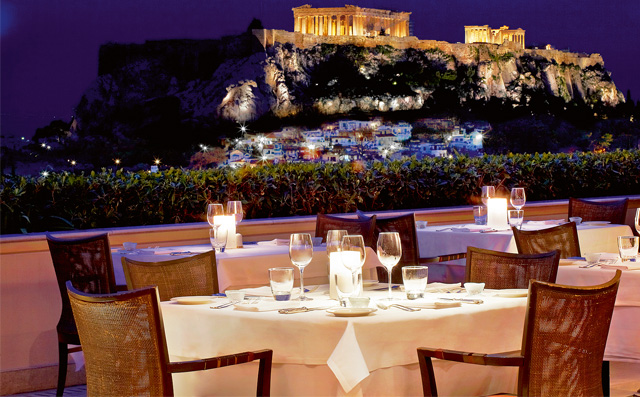Kerameikos: An Oasis in the Ancient City
The Kerameikos archaeological site provides a...

The church of Aghios Georgios on Lycabettus Hill
© Shutterstock
Not everyone is lucky enough to be heading into the Greek countryside for Easter, but there are upsides to staying in Athens. Much like in August, when most Athenians leave for vacation, the city empties during the Holy Week. Being here when most people are gone means less traffic, cleaner air, and a rare calm atmosphere.
To get even more into the Easter mood (which should involve relaxing, enjoying the nice weather, and forcing yourself to go on walks to digest all the food), head to the green areas in and around the city.
While the religious origins of many holidays in Greece are today overshadowed by more secular traditions (see: Christmas), at Easter, celebrations are still mainly tied to religion and the church. Even for non-Christians, the customs that take place in churches are wonderful to experience.

Good Friday: The Epitaphios
At around 21.00 on Good Friday, a funerary procession, called the Epitaphios, commemorates the death of Christ. It is a solemn and serious occasion, but also very special to watch. To take part in the Epitaphios, you can, in exchange for a small donation, pick up a candle at the church, where a service takes place and people queue to kiss the icon symbolizing the body of Christ which sits upon the flower-adorned wooden bier (also called an epitaphios). If you prefer to just watch, wait outside for the worshippers to begin the procession, following the bier of Christ with lit candles in their hands.
One unique way to witness the Epitaphios in Athens is leave the very center of town. At the Kaisariani and the Asteriou Monasteries on the north side of Mount Hymettus, the service is held at 14.00 instead of at night, making it a good option for those who like to turn in early, with the procession taking place on the forested mountain pathss.
Lycabettus Hill is another good option, with the Agioi Isidoroi church on its western side, and the famous Agios Georgios church at the top. From the latter, you can witness tens of different Epitaphios processions from above the city.

© Getty Images Aris Messinis
Holy Saturday: Anastasi
On Holy Saturday, bring a candle and head to church some time before midnight, to get a good spot for the midnight service celebrating the resurrection of Christ, called the Anastasi. At midnight, the priest chants the Christos Anesti (Christ has risen) hymn, and the first candles are lit from the holy flame from Jerusalem. As fireworks light up the sky, the holy flame is passed through the crowd, as one candle lights the next, and the words “Christos anesti” and the response “Alithos anesti” (Truly, he has risen) are exchanged between loved ones and strangers alike.
There are several great options for experiencing the Anastasi in Athens. The churches at the Lycabettus Hill are again good options on this night, providing excellent views of the fireworks all over the city. The many churches in the old neighborhood of Plaka are also excellent choices; especially notable is Aghion Anargyron church, which is the first in Greece to receive the holy flame from Jerusalem every year at 20.00 on Holy Saturday. For an Anastasi surrounded by the green of Filopappou Hill, visit the wonderful 16th century church of Aghios Dimitrios Loumbardiaris.

The Roof Garden of the Grande Bretagne Hotel is the place to have a refined bowl of magiritsa.
For forty days leading up to the Resurrection, many Greeks fast, and while a lot of delicious seafood has made Lent more than tolerable, they’re now ready for a meat-centered feast.
Immediately after the Anastasi, the tradition is to head home or to restaurants to enjoy the traditional soup magiritsa.
It’s a concoction you either love or hate, made with the organs of lamb, such as intestine, liver, lungs, and heart, and flavored with lemon and dill. It may sound off-putting, but the flavor is quite good, and definitely something one has to try at least once. But for those who would rather steer clear, there are often vegetarian alternatives. If not, be prepared for a meal of red-dyed eggs.
On Easter Sunday, the highpoint is lunch, and it has a lot more to offer than the early morning soup. Offal is on the menu again, in the form of kokoretsi – lamb organs tightly tied around a rotisserie spit with intestine, and roasted. The main attraction of the meal, however, is rotating on another spit. It’s the roasted lamb, which has been turning over hot coals for hours. To accompany the meats, there are plenty of salads, oven-baked potatoes, pies, and more eggs.
There are many options for eating out in Athens during these days, both for magiritsa soup after the midnight Anastasi service, and for Sunday lunch. If you plan to be in the center, make reservations at one of the large hotels. For magiritsa in particular, we recommend the Roof Garden at the Grande Bretagne Hotel, at Syntagma Square, for an excellent view of any fireworks still going on after the Anastasi. For those who have celebrated at Lycabettus, Orizontes is a good option with a view, with a set menu including magiritsa, lamb, and several sides.
Mavro Provato in Melissia and Bebeka in Halandri are other good options for both meals. That said, for the best lamb you’ve ever had, it’s best to head to the meat-centered tavernas in Attica’s “meat suburbs” (see here for more). And for those who prefer a meat-free Easter Sunday lunch, Lime Bistro in Gazi will serve vegan versions of the classic Easter foods from 12.00 to 21.00.
The Kerameikos archaeological site provides a...
Not all surprises are pleasant, but...
Old and new hangouts, cafés, sandwich...
A guided journey across Athens’ storied...